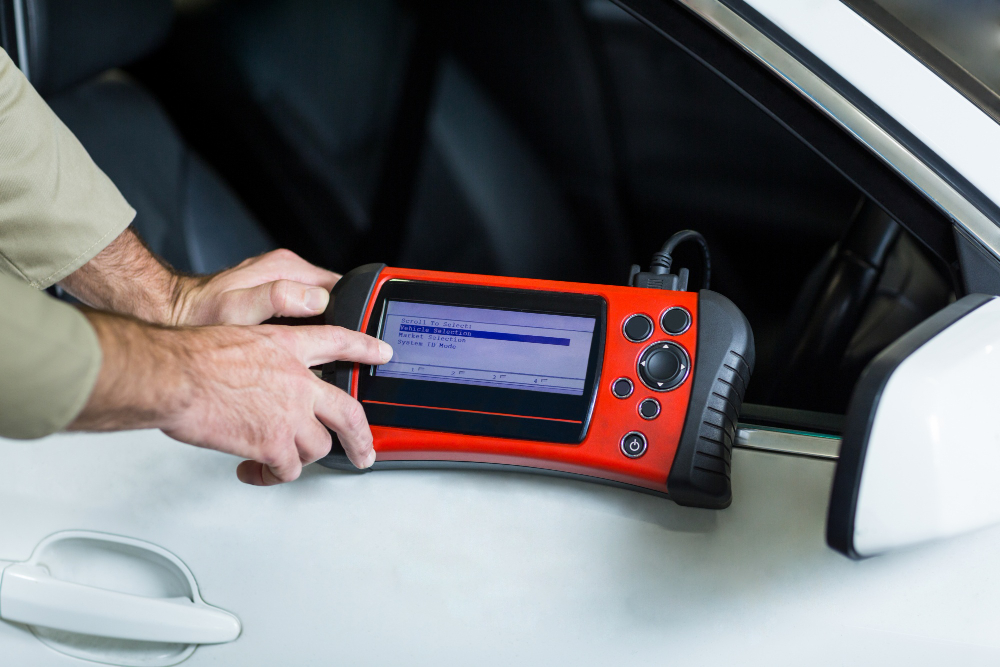Every driver knows that sinking feeling when a small amber light flashes on the dashboard — the Check Engine Light. It often appears without warning, and many people are unsure what it means or how serious it is. If you live in the Northern Beaches, where stop-start traffic and hilly roads are common, understanding this warning is even more important for keeping your car safe and reliable.
This guide will explain what the check engine indicator light means, the most common causes behind it, and when you should take your car to a professional.
What Does the Check Engine Light Indicate?
It is part of your car’s onboard diagnostics (OBD) system, which signals that the vehicle’s computer has detected something out of normal operating range. It could be related to the engine, emissions, fuel, or transmission systems.
When the light turns on, the system logs a diagnostic trouble code (DTC) that helps technicians pinpoint the issue. Some problems are minor — such as a loose fuel cap — while others may affect your car’s performance or emissions and need immediate attention.
If the light stays on steadily, it’s generally safe to drive short distances, but you should book a diagnostic soon. If it flashes, it indicates a more serious problem, like an engine misfire, and continuing to drive could cause damage to the catalytic converter.
Common Reasons the Check Engine Light Comes On
Knowing the usual culprits behind your check engine indicator light can help you react appropriately.
Loose or Faulty Fuel Cap
A missing or loose fuel cap is one of the most common and harmless reasons. It allows fuel vapours to escape, disrupting the fuel system pressure. Tighten or replace the cap and see if the light turns off after a few drives.
Faulty Oxygen Sensor
This sensor measures how much oxygen remains in the exhaust gases. When it fails, fuel economy drops and emissions increase. Replacing it promptly helps maintain engine efficiency.
Failing Spark Plugs or Ignition Coils
Worn spark plugs or damaged ignition coils can cause misfires, rough idling, and reduced power. These issues not only trigger the light but also increase fuel consumption.
Damaged Catalytic Converter
The catalytic converter reduces harmful exhaust emissions. If it’s blocked or damaged, you may notice reduced performance, poor fuel economy, or a rotten-egg smell.
Mass Airflow Sensor Malfunction
The mass airflow sensor ensures the engine receives the correct air-to-fuel ratio. A fault here can cause rough running, stalling, or poor acceleration.
Exhaust Gas Recirculation (EGR) Valve Issue
If the EGR valve gets clogged, it can cause poor engine performance and high emissions, often lighting up the dashboard warning.
What to Do When the Light Appears
When the check engine light turns on, follow these steps before panicking:
Observe the Light’s Behaviour
If it’s flashing, pull over safely and turn off the engine. You might have a serious problem, such as an engine misfire.
If it’s solid, you can continue driving, but you should schedule a diagnostic soon.Check Simple Causes
Start by tightening your fuel cap. In many cases, the light will reset itself after a few trips once the issue is resolved.
Monitor the Car’s Performance
If you notice hesitation, vibration, or strange noises, avoid driving long distances and contact a mechanic.
Get a Diagnostic Scan
A professional scan tool can read the fault codes and identify the exact issue. We use advanced diagnostic equipment to locate problems quickly and accurately.

Preventing Future Check Engine Light Warnings
You can reduce the chances of seeing that dreaded light again by maintaining your vehicle properly:
- Book regular logbook servicing as per your manufacturer’s schedule.
- Replace spark plugs, filters, and sensors as scheduled.
- Use high-quality fuel and oil to avoid residue build-up.
- Keep an eye on the exhaust system for leaks or damage.
- Have your car’s OBD system scanned annually, even if the light isn’t on.
Small maintenance steps can prevent larger mechanical or emissions-related problems from developing later.
Why You Shouldn’t Ignore It
Many drivers in the Northern Beaches assume that if the car feels fine, the check engine light can wait. However, delaying a proper inspection can cause minor issues to worsen. For example, a faulty oxygen sensor can lead to a damaged catalytic converter, turning a small repair into a costly one.
Ignoring the warning light can also reduce your car’s fuel efficiency, increase emissions, and affect performance. More importantly, it can mask other underlying problems that compromise your vehicle’s reliability and safety.
Frequently Asked Questions
Is it safe to drive with the engine light on?
Why does the light come and go?
Can a check engine indicator light reset itself?
How long does it take to diagnose the issue?
How much does it cost to fix check engine problems?
Take Action When the Check Engine Light Appears
Your check engine light is more than just a warning — it’s your car’s way of asking for attention. Whether the issue is minor or serious, acting quickly prevents damage, improves fuel economy, and keeps your vehicle running efficiently.
At NM Performance Automotive, we specialise in engine diagnostics and repairs for all makes and models across the Northern Beaches — from car servicing to clutch replacements and brake services.
Call 02 9999 2128 to book your diagnostic today and drive confidently knowing your vehicle is in expert hands.
